Following the Apollo 11 Moon landing in July 1969, many management changes took place at NASA, both at Headquarters in Washington, DC, as well as at some of the field centers. With President John F. Kennedy’s goal of landing a man on the Moon and returning him safely to the Earth before the end of the decade successfully accomplished, some senior managers decided that it was time to pursue other endeavors outside of NASA, while others stayed on with the agency taking on new responsibilities. The management changes occurred as NASA transitioned from the Apollo Moon landing program to new challenges in the 1970s.
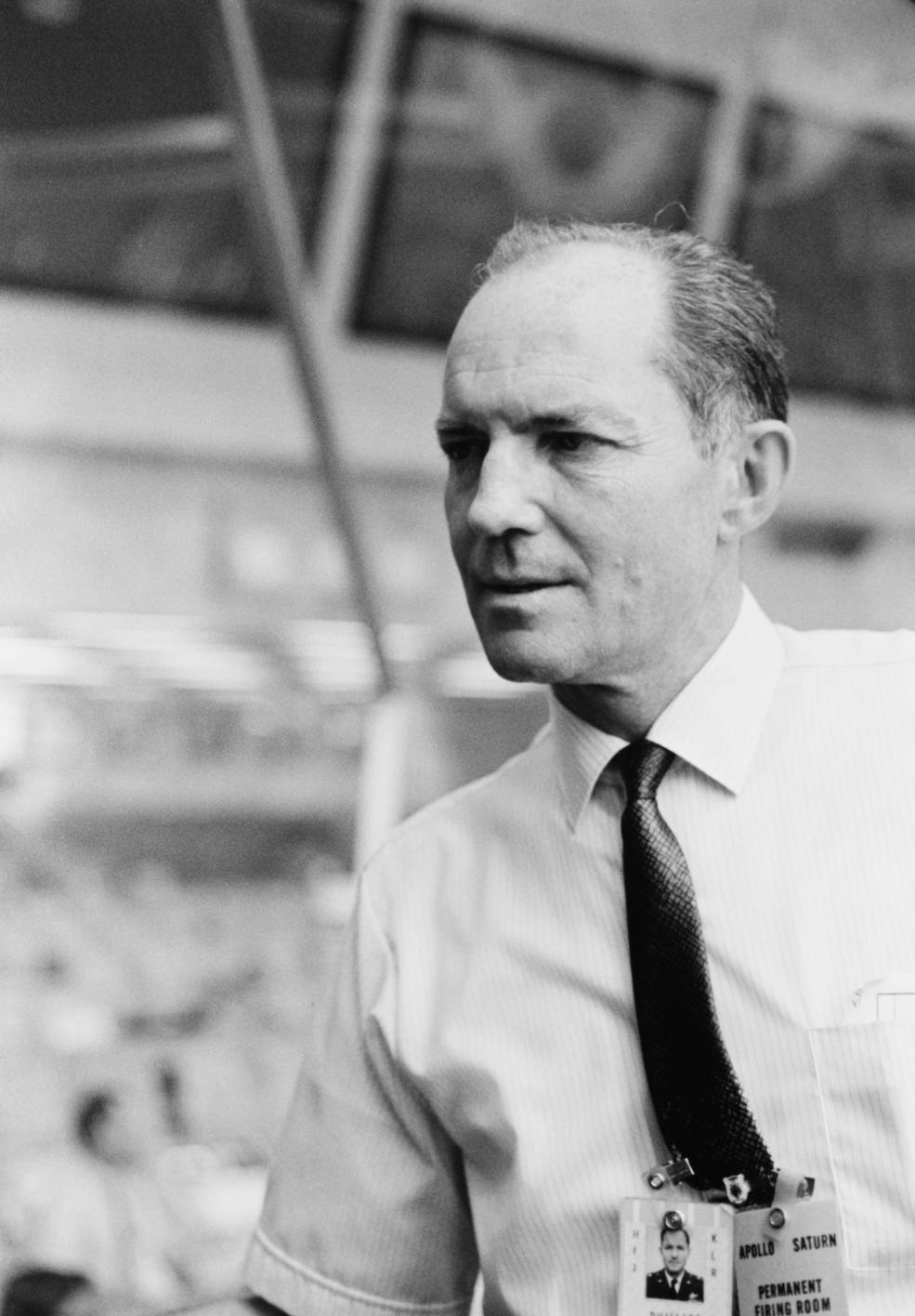
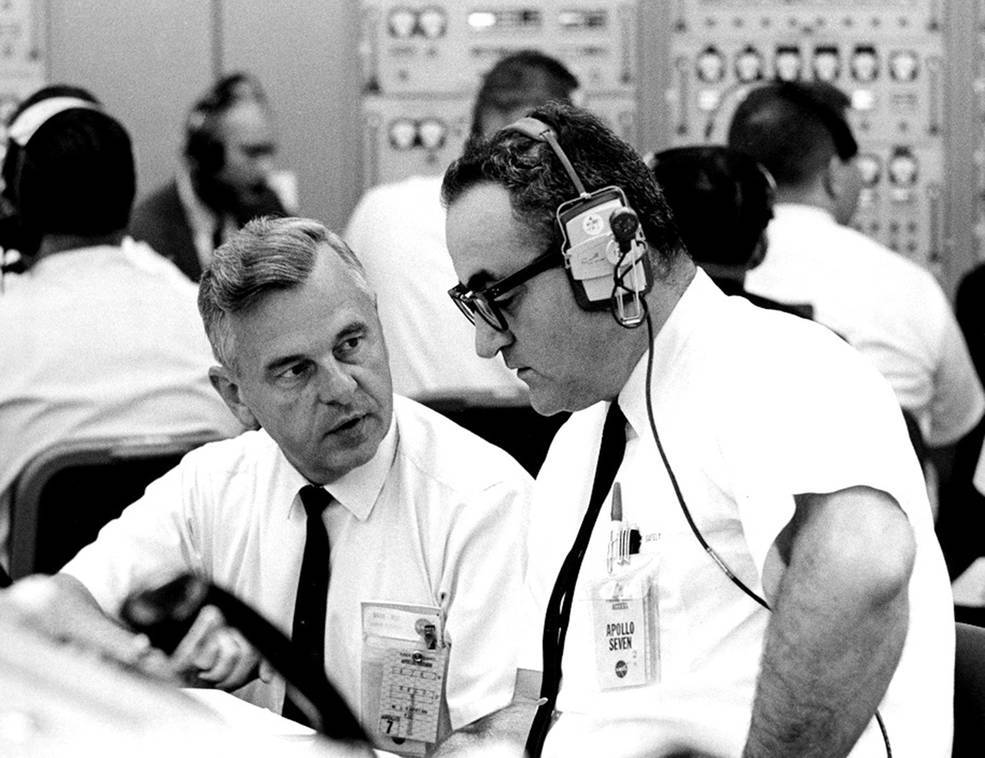
Left: Phillips, seen here in the Launch Control Center during the Apollo 11 launch. Right: Petrone (at right) succeeded Phillips, and Kapryan (at left) succeeded Petrone – they are seen here during the Apollo 7 Countdown Demonstration Test in September 1968.
The first of several changes in top NASA management following the Apollo 11 mission took place soon after the flight. On July 31, Secretary of Defense Melvin R. Laird announced the assignment of Lt. Gen. Samuel C. Phillips, detailed to NASA Headquarters since 1964 as Apollo Program Director in the Office of Manned Space Flight, to be Commander of the Air Force Space and Missile Systems Organization in Los Angeles, effective Sep. 1. Phillips had overseen the Apollo Program through its critical development years and played a key role in the recovery after the January 1967 Apollo 1 fire. His leadership and management were instrumental in the achievement of the first human lunar landing within the timeframe set by President John F. Kennedy. On Aug. 22, NASA named Rocco A. Petrone, Director of Launch Operations at Kennedy Space Center since 1966, to succeed Phillips, also effective Sep. 1. Petrone’s deputy, Walter J. “Kappy” Kapryan, stepped into the Director of Launch Operations position. Kapryan began his career at the Langley Research Center in 1947, joining the Space Task Group (STG) in 1959 and relocating to Kennedy the following year to support Mercury launches.
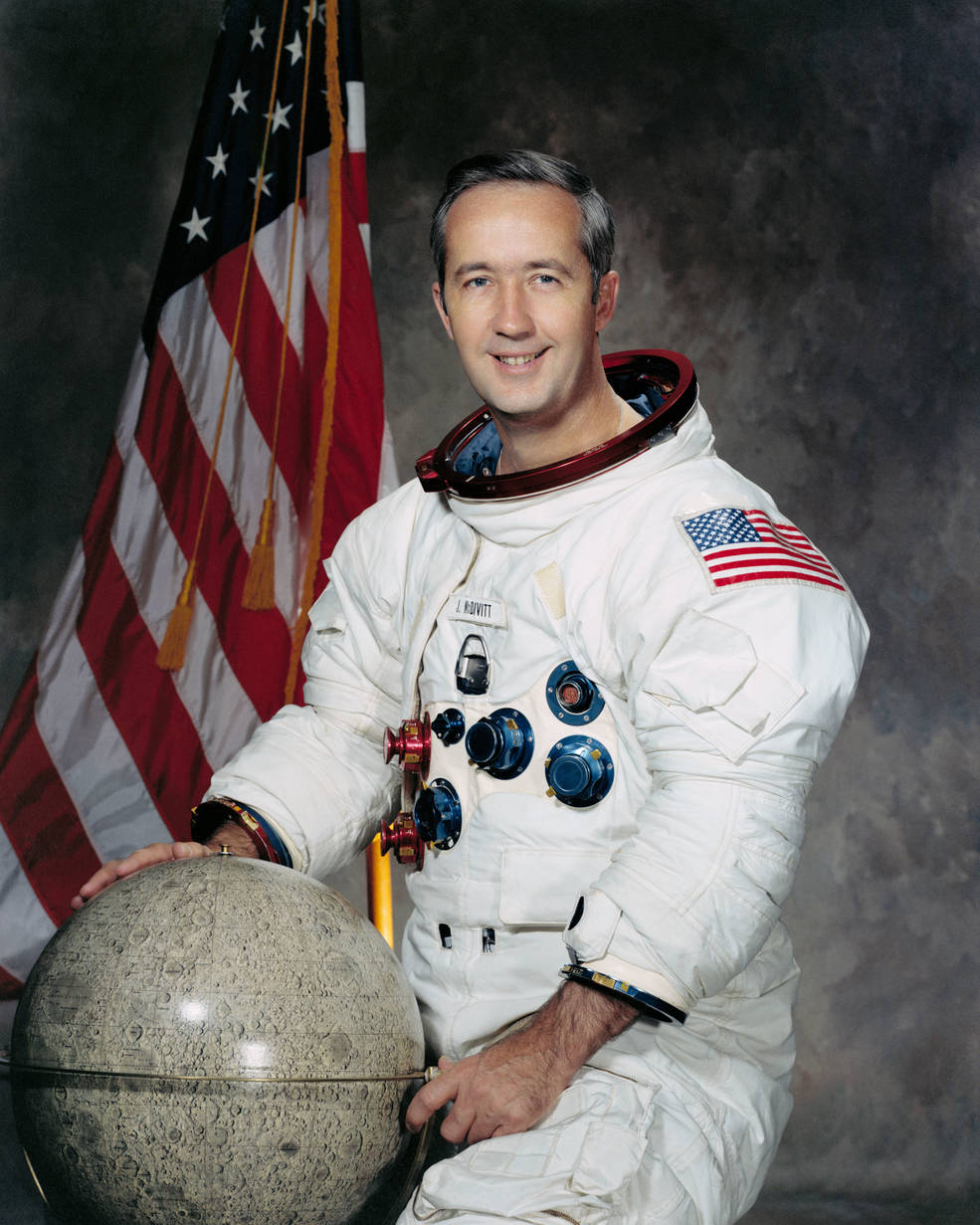
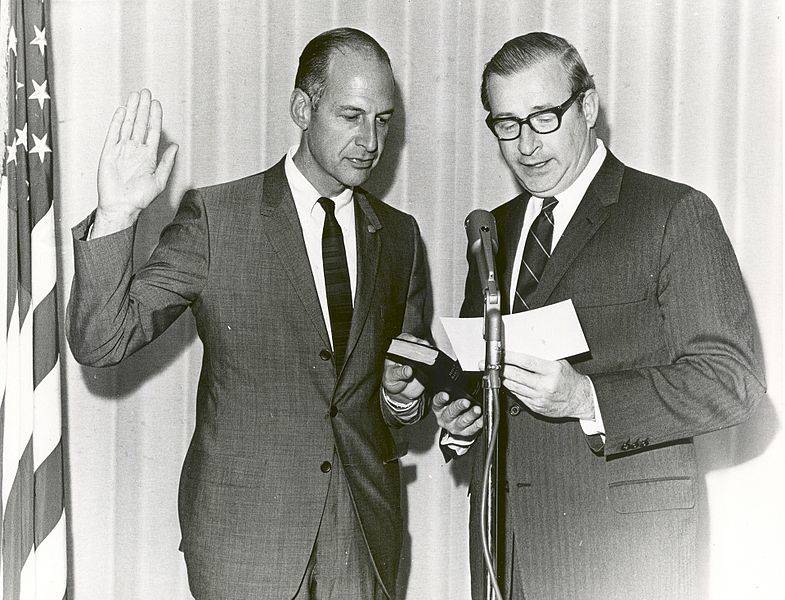
Left: Portrait of McDivitt. Right: Paine (at right) swearing Low in as NASA Deputy Administrator.
On Sept. 25, 1969, NASA appointed veteran astronaut James A. McDivitt as the Manager of the Apollo Spacecraft Program Office at the Manned Spacecraft Center (MSC), now the Johnson Space Center in Houston. McDivitt, selected as an astronaut in 1962, commanded two spaceflights, Gemini 4 in June 1965 that included the first American spacewalk and Apollo 9 in March 1969, the first test of the Lunar Module in Earth orbit. He succeeded George M. Low who, in that position since April 1967, led the agency’s efforts to recover from the Apollo 1 fire and originated the idea to send Apollo 8 on a lunar orbital mission. Under his tenure, NASA successfully completed five crewed Apollo missions including the first human Moon landing to meet President John F. Kennedy’s goal. MSC Director Robert L. Gilruth initially assigned Low to plan future programs until Nov. 13, when President Richard M. Nixon nominated him as NASA Deputy Administrator. The Senate confirmed Low’s nomination on Nov. 25, and NASA Administrator Thomas O. Paine swore him in on Dec. 3. Low filled the position vacant since March 20, 1969.
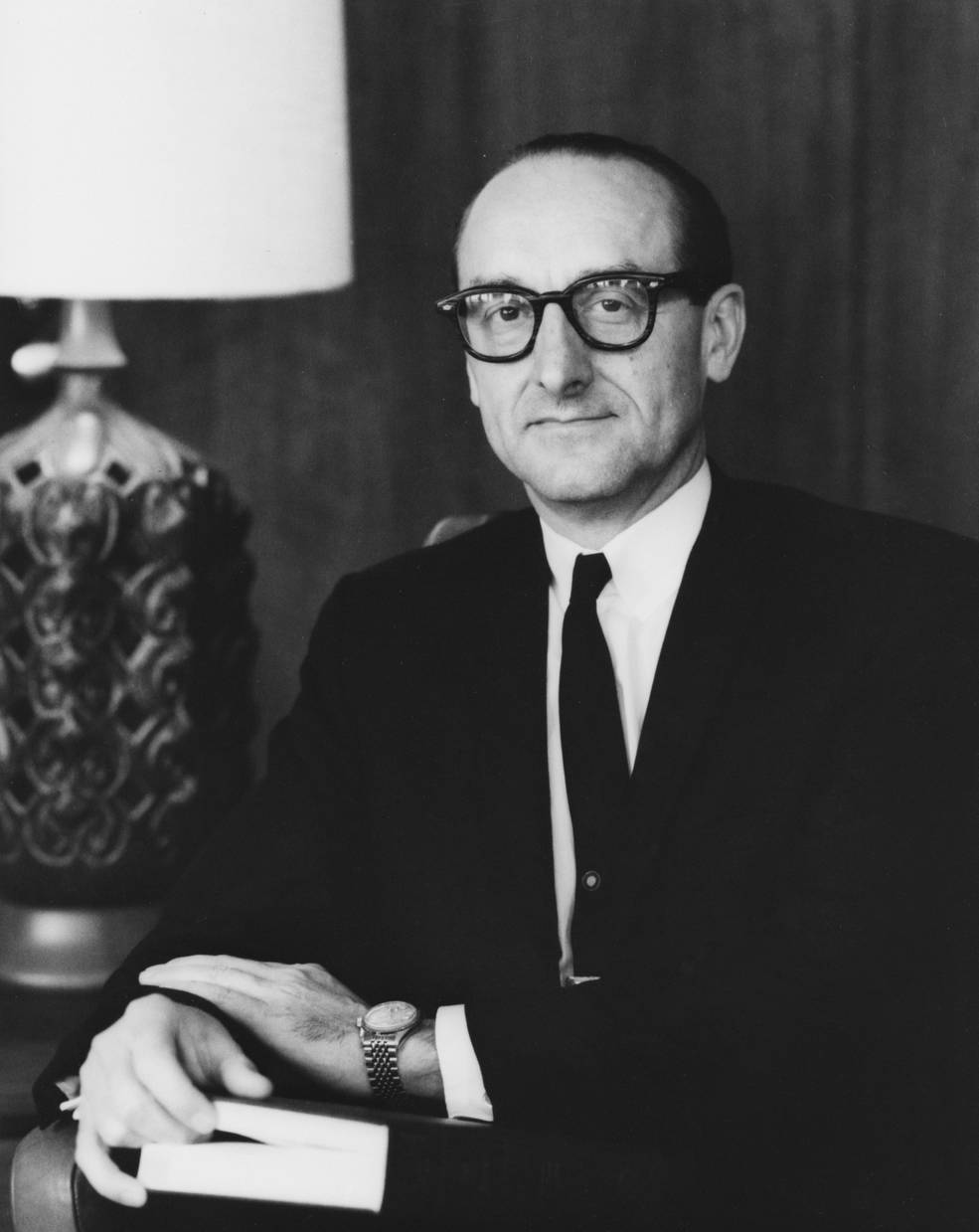
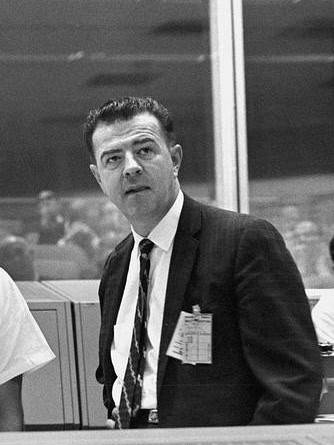
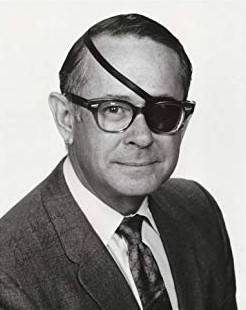
Left: Portrait of Mueller. Middle: Mathews in Mission Control during Gemini 10 in 1966. Right: Portrait of Myers.
George E. Mueller announced his resignation from NASA on Nov. 10, effective Dec. 10, to take on a vice president position at General Dynamics Corp. in New York City. As NASA’s Associate Administrator for Manned Space Flight since 1963, Mueller had responsibility for the largest research, development, and operational program that at its peak employed 400,000 people across the government, industry, and academia. Mueller directed the American human spaceflight program from the beginning of the Gemini program through the first human Moon landing. Perhaps his best-known management idea that helped achieve the Moon landing on schedule was the concept of “all-up” testing of new rockets such as the Saturn V. Paine named former Gemini Program Manager Charles W. Mathews as Acting Associate Administrator until designating Dale D. Myers as Mueller’s permanent successor on Jan. 12, 1970. Before joining NASA, Myers managed the Apollo Command and Service Module Program and since June 1969 directed the space shuttle program at North American Rockwell.
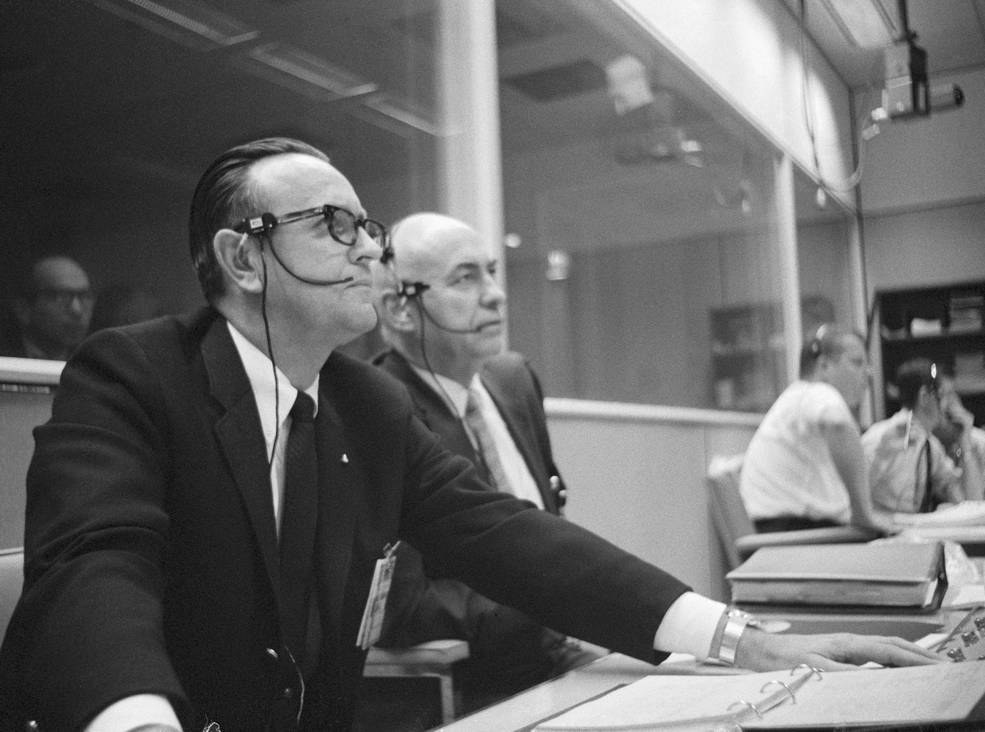
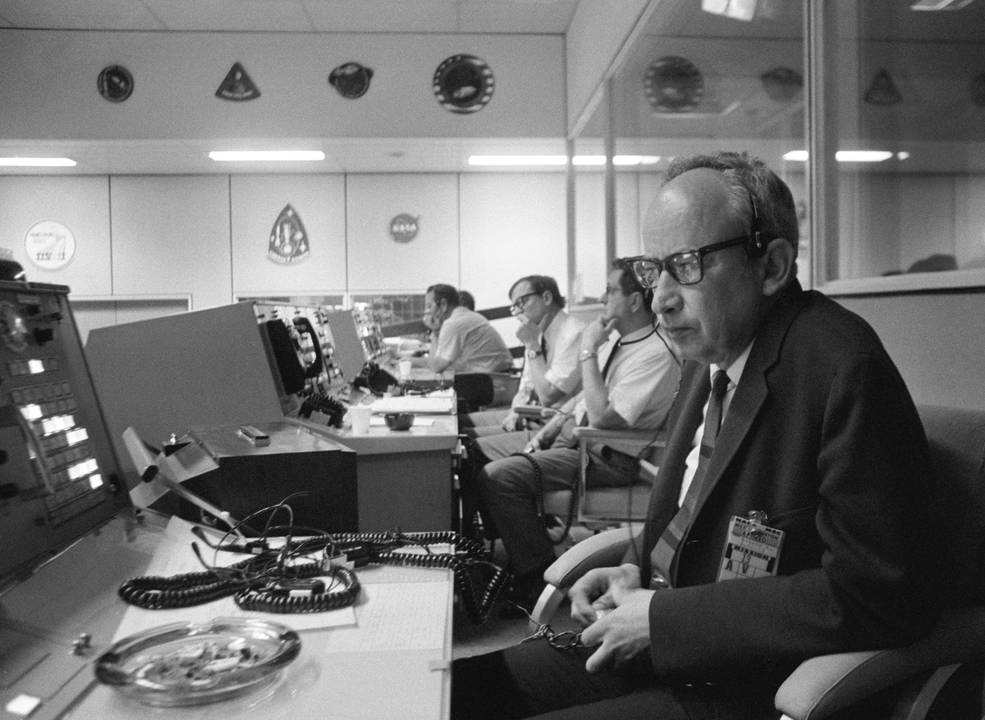
Left: Kraft (at left) and Gilruth in Mission Control during the April 1968 Apollo 5 mission. Right: Sjoberg in Mission Control during the launch of Apollo 13 in April 1970.
On Nov. 26, Gilruth appointed Christopher C. Kraft as Deputy Director of MSC, succeeding George S. Trimble who resigned Sep. 30. Kraft, like Gilruth an original member of the STG formed in 1958 to carry out Project Mercury, and the original Mercury Flight Director, had most recently served as the Director of Flight Operations at MSC. Kraft developed the basic concepts of Mission Control and served as Flight Director on Mercury and Gemini missions before taking on the leadership role in flight operations. On Dec. 28, Gilruth named Sigurd A. “Sig” Sjoberg, also an STG member and Deputy Director of Flight Operations since 1963, to succeed Kraft.




























